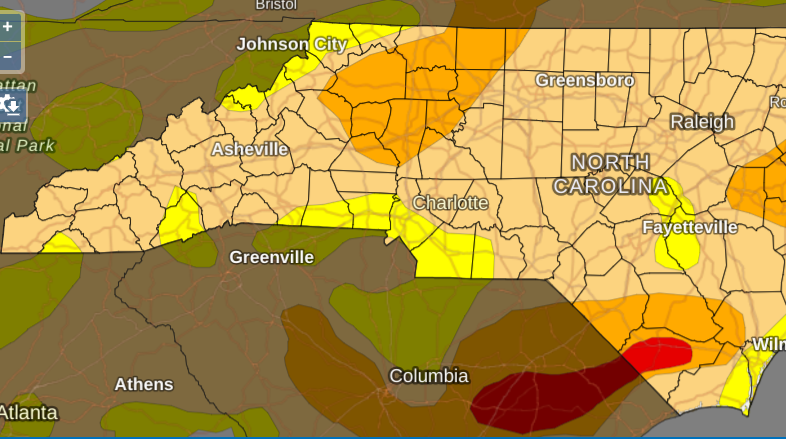
North Carolina Drought Update
Raleigh -- July 12, 2024: Drought in North Carolina: Drought conditions in North Carolina are assessed by the North Carolina
Drought Management Advisory Council (NC DMAC), a collaboration of drought experts from various government agencies in North Carolina, Virginia, and South Carolina, and organized by the N.C. Department of Environmental Quality’s Division of Water Resources. Members of the NC DMAC meet weekly and submit their drought condition recommendations to the National Drought Mitigation Center for updates to the weekly U.S. Drought Monitor map. The NC DMAC evaluates variables including rainfall, streamflow, groundwater levels, regional climate, soil moisture, water storage in reservoirs, ecological conditions, municipal water restrictions, and the time of year. These conditions are closely monitored and can rapidly change, especially during the hot summer months, which bring about higher evaporation rates.
The Southeast region generally receives substantial precipitation and is often considered water-rich. However, droughts are not uncommon, and the Southeast has a long history of multi-year droughts, including the recently experienced record-breaking droughts of 2006–2008 and 2010–2012. These droughts had far-reaching impacts on agriculture, water availability for municipalities and industry, and wildfires.
NOAA’s National Integrated Drought Information System (NIDIS) launched the Southeast Drought Early Warning System (DEWS) in 2020, which includes Alabama, Florida, Georgia, North Carolina, South Carolina, Tennessee, and Virginia. The Southeast DEWS is a network of regional and national partners that share information and coordinate actions to help communities in the region cope with drought.
The U.S. Drought Monitor depicts the location and intensity of drought across the country. The map uses 5 classifications: Abnormally Dry (D0), showing areas that may be going into or are coming out of drought, and four levels of drought (D1–D4).
This map is used by the U.S. Department of Agriculture to trigger some disaster declarations and loan eligibility. Individual states and water supply planning may use additional information to inform their declarations and actions.
*WNC Area is D1 Moderate Drought
Source and Image: NOAA and National Integrated Drought Information System


 How to resolve AdBlock issue?
How to resolve AdBlock issue? 